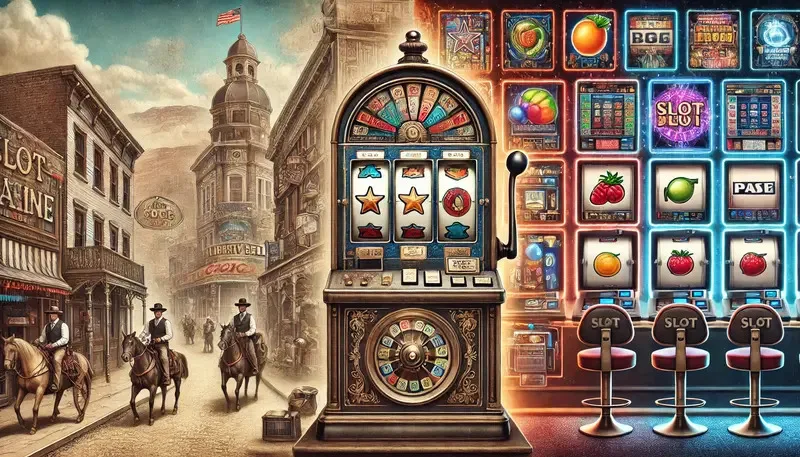
History of Slot Machines: From ‘Liberty Bell’ to Online Slots
Slot machines have evolved remarkably since their inception, transforming from simple mechanical devices to complex electronic and online systems. This journey from the iconic ‘Liberty Bell’ to today’s online slots reveals an intriguing history filled with innovation, technological advancement, and a growing passion for gambling entertainment.
The First Slot Machines
The history of slot machines dates back to the late 19th century, with the creation of the ‘Liberty Bell’ by Charles Fey in 1895. Fey, a San Francisco mechanic, designed this groundbreaking device with three spinning reels and a simple mechanism. The ‘Liberty Bell’ was named after its highest-paying symbol, a cracked bell, and featured other symbols like horseshoes, stars, and playing cards. The machine’s straightforward design and rewarding nature quickly captured the public’s attention, leading to its widespread popularity in bars and saloons.
The First Slot Machines of Other Manufacturers
Following the success of the ‘Liberty Bell’, other manufacturers entered the scene, eager to capitalize on this new form of entertainment. In 1907, Herbert Mills, a Chicago manufacturer, produced the ‘Operator Bell’, which introduced the iconic fruit symbols still popular in slot machines today. These early competitors introduced variations to the design and payout systems, ensuring that slot machines continued to evolve and captivate players. The introduction of coin-operated mechanisms further simplified the gambling process, making slot machines more accessible and appealing.
Boom of Slot Machines
The 20th century saw a significant boom in the popularity of slot machines. They became a staple in casinos and gaming establishments across the United States. This era marked the birth of more sophisticated machines with enhanced features, such as multiple paylines and higher payouts. The demand for these machines grew, and manufacturers continually innovated to meet the needs of a growing player base. The emergence of companies like Bally Manufacturing in the 1960s introduced electromechanical slots, which combined traditional mechanics with electric components, leading to the development of new features like flashing lights and sounds that enhanced the gaming experience. Casinos like Forbes Casino embraced these innovations, further propelling the slot machine’s popularity.

First Electronic Slots
The 1970s marked the arrival of the first fully electronic slot machines. These machines featured microprocessors, which allowed for more complex gameplay, random number generators, and greater reliability. The introduction of video slots in the 1980s revolutionized the industry. These video slots replaced physical reels with digital ones displayed on a screen, offering endless possibilities for game themes, graphics, and bonus features. Players could now enjoy a more immersive experience, with visually appealing animations and interactive gameplay.
Slot Machines in Online Casinos
The rise of the internet in the late 20th and early 21st centuries brought about another transformation in the slot machine industry. Online casinos began to offer digital versions of classic slots, accessible from the comfort of one’s home. The convenience of online slots, coupled with advanced graphics, sound effects, and diverse game themes, attracted a new generation of players. Online slots quickly became one of the most popular forms of online gambling, with developers constantly creating new and innovative games to keep players engaged. The ability to play slots on mobile devices further increased their accessibility and popularity, solidifying their place in the digital age of gambling.
From the mechanical ‘Liberty Bell’ to today’s advanced online slots, the evolution of slot machines is a testament to the enduring appeal of this form of gambling. Each phase of development, from mechanical to electronic and digital, has brought new features and experiences, ensuring that slot machines remain a favorite among players worldwide. As technology continues to advance, the future of slot machines promises even more innovation and excitement for gambling enthusiasts.
